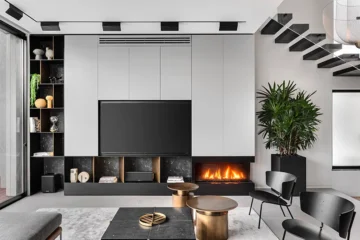The Role of Interior Design in Making Real Estate More Attractive to Investors

Real estate investment has long been a popular and lucrative option for those seeking to diversify their financial portfolios and generate passive income. One aspect that can significantly impact the success of a real estate investment is the property’s interior design. A well-designed interior not only increases the appeal of the property for sale to attract potential buyers and renters but also enhances its overall value. In this article, we will explore the role of interior design in making real estate more attractive to investors and discuss how incorporating thoughtful design elements can ultimately result in higher returns on investment.
- Creating a Positive First Impression
The first impression a property makes on potential investors, buyers, or tenants is crucial. A well-designed interior can instantly create a positive impression, drawing interest and attention to the property. By utilizing thoughtful design elements, such as a cohesive color scheme, appropriate lighting, and well-planned furniture layout, investors can showcase the property’s best features and make it more appealing to a wide range of potential clients.
- Enhancing Functionality and Space Utilization
An essential aspect of interior design is maximizing the functionality and efficient use of space within a property. By employing clever design solutions, such as built-in storage, multi-purpose furniture, and smart room layouts, investors can create spaces that cater to the needs and preferences of potential occupants. This, in turn, increases the property’s desirability and can lead to higher rental rates or sale prices. Also, by utilizing the space within the property, your home will be better prepared for an open house and any potential buyers will have an easier time imagining themselves living there.
- Reflecting Local Market Trends and Preferences
Successful real estate investors understand the importance of catering to the specific tastes and preferences of their target market. By incorporating interior design elements that reflect local market trends, investors can ensure their properties resonate with potential buyers and renters. This may involve researching popular design styles, materials, and color palettes in the area, as well as considering the unique needs and preferences of the local demographic.
- Increasing Property Value
A well-executed interior design can have a significant impact on a property’s overall value. By investing in high-quality finishes, fixtures, and appliances, investors can enhance the perceived value of their properties, resulting in higher sale prices or rental rates. Additionally, properties with professionally designed interiors tend to have better resale potential, as they are more likely to appeal to a broad range of buyers.
- Promoting Energy Efficiency and Sustainability
Sustainable and energy-efficient design elements are becoming increasingly important to many buyers and renters. By incorporating eco-friendly materials, energy-efficient appliances, and smart technologies into a property’s interior design, investors can attract environmentally conscious clients and potentially reduce ongoing utility costs. This not only contributes to the property’s overall appeal but also aligns with the growing demand for sustainable living options.
- Encouraging Long-Term Tenancy and Reduced Vacancy Rates
A well-designed interior can significantly influence a tenant’s decision to sign a longer lease or renew their existing agreement. Properties that offer comfortable, functional, and visually appealing living spaces are more likely to attract and retain high-quality tenants, leading to reduced vacancy rates and more consistent rental income. By investing in thoughtful interior design, real estate investors can promote long-term tenancy and maximize their return on investment.
- Differentiating Properties in a Competitive Market
In a competitive real estate market, it is essential for investors to differentiate their properties from the competition. A well-designed interior can serve as a unique selling point, setting a property apart from others on the market and attracting the attention of potential buyers or renters. By offering a visually appealing and functional living space, investors can increase the perceived value of their properties and generate greater interest from their target market.
Conclusion
In conclusion, the role of interior design in making real estate more attractive to investors cannot be overstated. By focusing on creating positive first impressions, enhancing functionality, reflecting local market trends, increasing property value, promoting energy efficiency, encouraging long-term tenancy, and differentiating properties in a competitive market, investors can significantly improve the appeal and success of their real estate investments. A well-designed interior not only attracts a broader range of potential clients but also contributes to higher returns on investment, making it an essential component of any successful real estate strategy.
FRENCH TAGS




